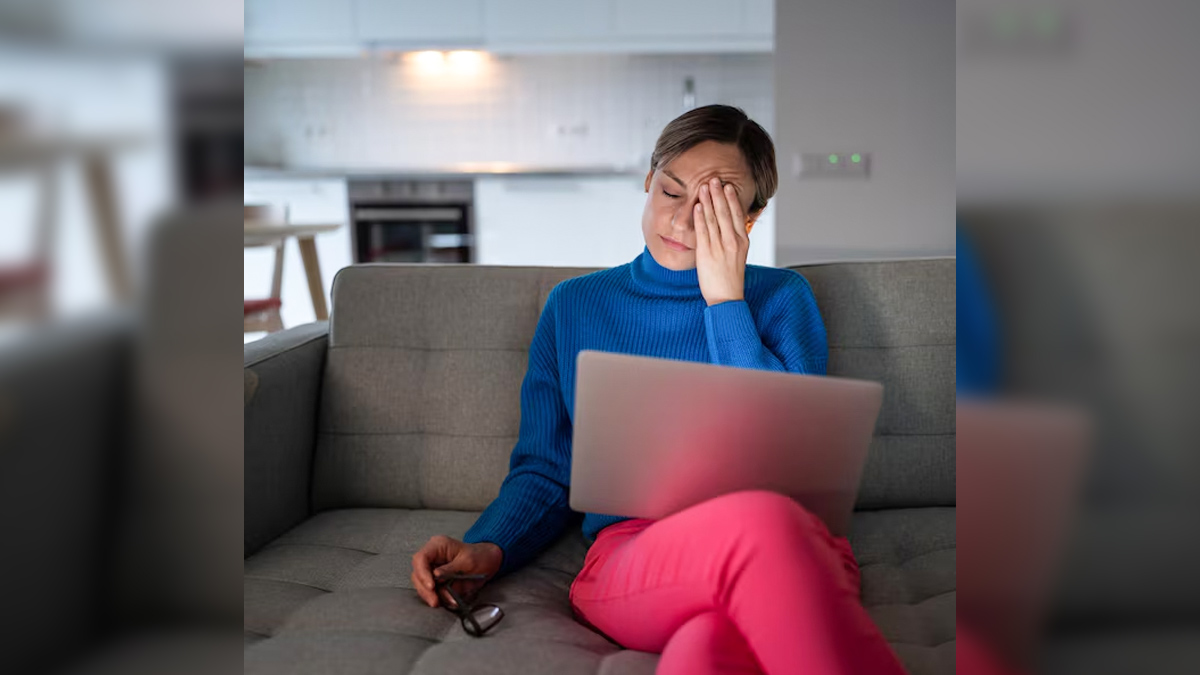
We're currently living in the digital era, where most of us spend hours glued to our screens. But have you ever wondered why you sometimes have a throbbing headache, burning eyes, or feel tired at the end of the day? Blue light often takes the blame, but is it the only cause? We spoke to Dr Janhvi Mehta, Consultant – Ophthalmology, Jaslok Hospital & Research Centre, Mumbai, to get to the bottom of screen-induced headaches and what you can do about them.
Table of Content:-
Why Do Screens Cause Headaches?

When we look or stare at the screen for long hours, it leads to something that many of us don’t realise – we blink less.
“When you’re staring at a screen, especially for hours, you forget to blink naturally,” says Dr Mehta. “This causes eye dryness and discomfort.”
Also Read: Headaches And Brain Cancer: When To Be Concerned And What To Ask Your Doctor
A 2024 study among Bangladeshi students published in the BMJ Neurology Open found that long hours of screen time, especially over a year, can increase the risk of headaches.
Around 26% reported migraines, 47% had tension-type headaches, and 15% experienced both. Factors like eye strain, poor sleep, depression, and family history of headaches made things worse.
Moreover, staring closely at digital devices for extended periods tires out the eye muscles, which can result in eye strain and what’s known as asthenopic symptoms, a term for visual fatigue that often leads to headaches, blurry vision, and difficulty focusing.
Is Blue Light Really The Main Problem?

While blue light is commonly singled out, Dr Mehta believes it’s not the only factor. Blue light does play a role in causing digital eye strain, but it’s equally about other issues—like excessive screen time, high brightness settings, poor posture, and not using the correct prescription glasses if needed.
In short, the headache or eye discomfort you experience might not be solely from blue light but a combination of bad screen habits and neglected eye care.
Do Blue Light-Blocking Glasses Actually Help?
Yes, but within reason. According to Dr Mehta, blue light-blocking glasses can reduce some of the strain on your eyes, which in turn may lessen the chance of headaches. They help to reduce eye strain and thereby indirectly reduce headaches, says Dr Mehta. But they are not the sole solution. Good screen habits are equally, if not more, important.
So, How Much Screen Time Is Too Much?
According to Dr Mehta, “Anything more than three hours a day of uninterrupted screen time is considered excessive.”
Given how common long hours at the screen have become, especially for work, this can be difficult to avoid. The key is to take frequent breaks and be aware of your screen habits.
Also Read: How To Stop Summer Headaches Without Popping Pills Every Afternoon
Tips To Reduce Screen Fatigue And Prevent Headaches

If you can’t cut down your screen time, you can still protect your eyes. Dr Mehta shares simple, effective ways to reduce screen fatigue:
- Follow the 10-10 rule: Take a 10-second break every 10 minutes.
- Use computer vision syndrome apps: These apps blur your screen at intervals to remind you to rest your eyes.
- Adjust brightness and contrast: Keep your screen brightness at a comfortable level—neither too dim nor too harsh.
- Use proper lighting: Avoid working in dark rooms with a bright screen; ensure your surroundings are well lit.
- Blink consciously: Make it a habit to blink often while working to keep your eyes moist.
- Get your eyes tested: Ensure you’re wearing the right prescription to avoid unnecessary strain.
Conclusion
Screen time does trigger headaches, mainly because of the eye strain. However, while many blame the blue light, the real problem is often a combination of poor screen habits, long hours without breaks, and ignoring eye health. By being more mindful of how you use your devices, taking regular breaks, and using tools like blue light glasses when needed, you can go a long way in keeping screen-induced headaches at bay.
Also watch this video
How we keep this article up to date:
We work with experts and keep a close eye on the latest in health and wellness. Whenever there is a new research or helpful information, we update our articles with accurate and useful advice.
Current Version
